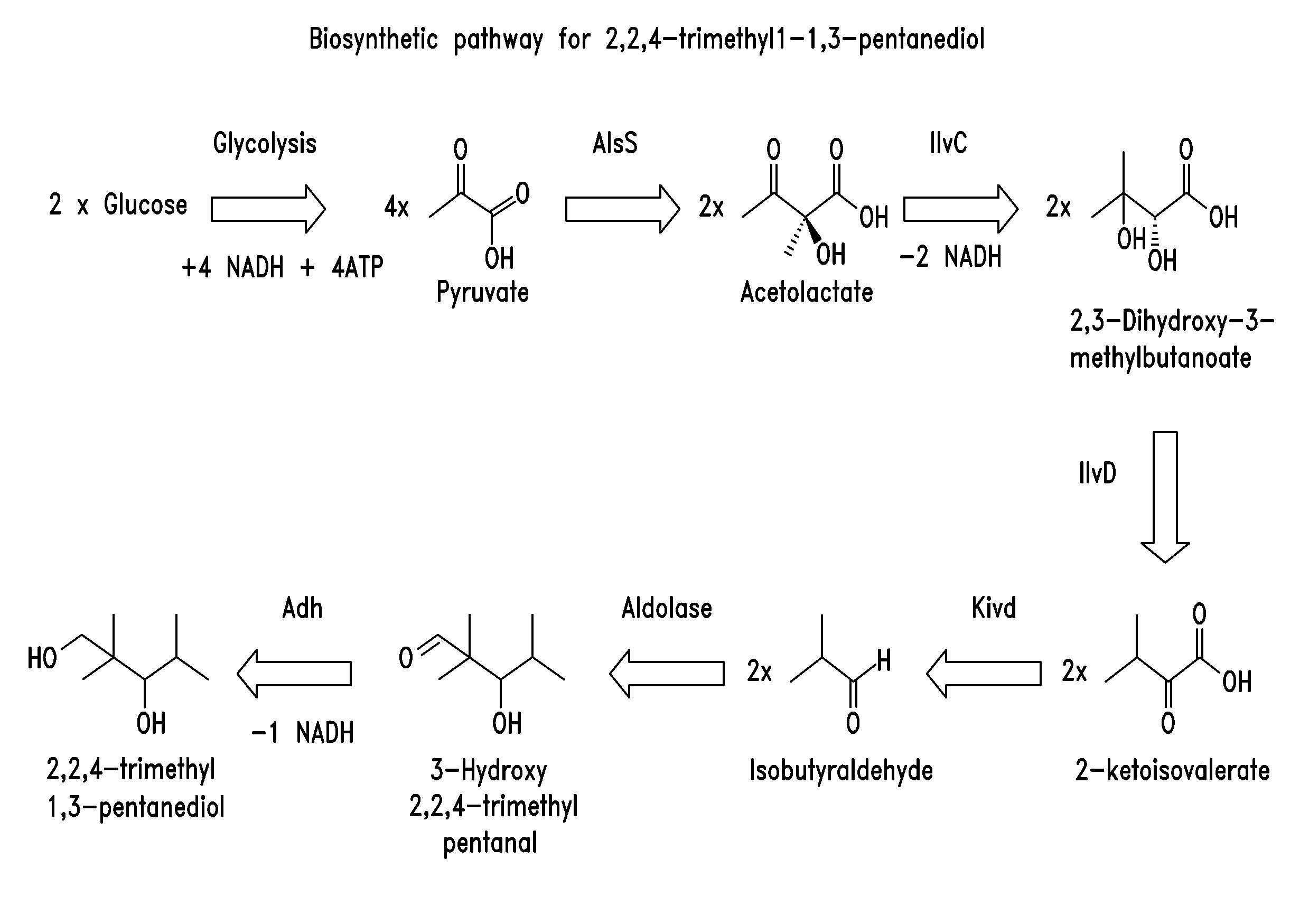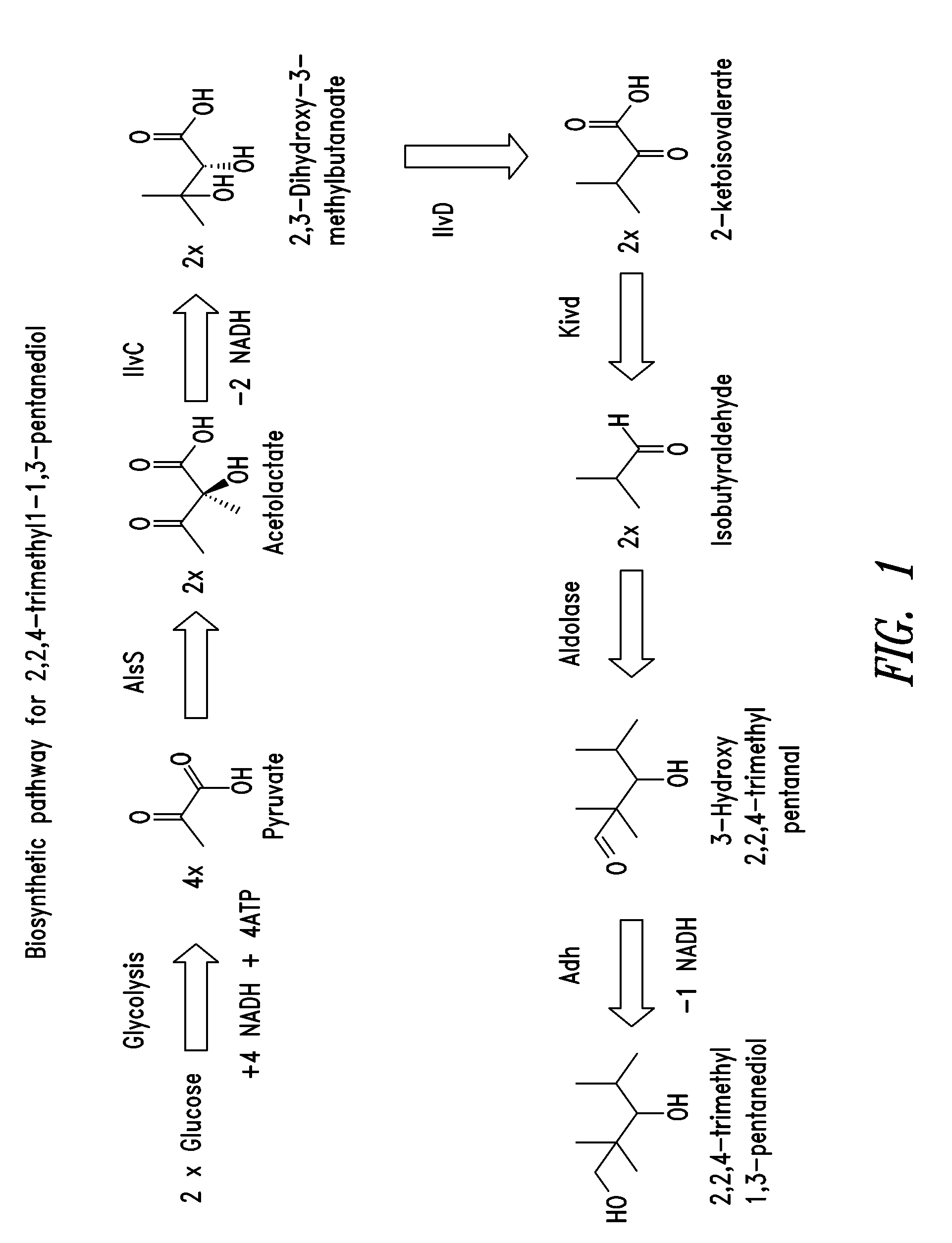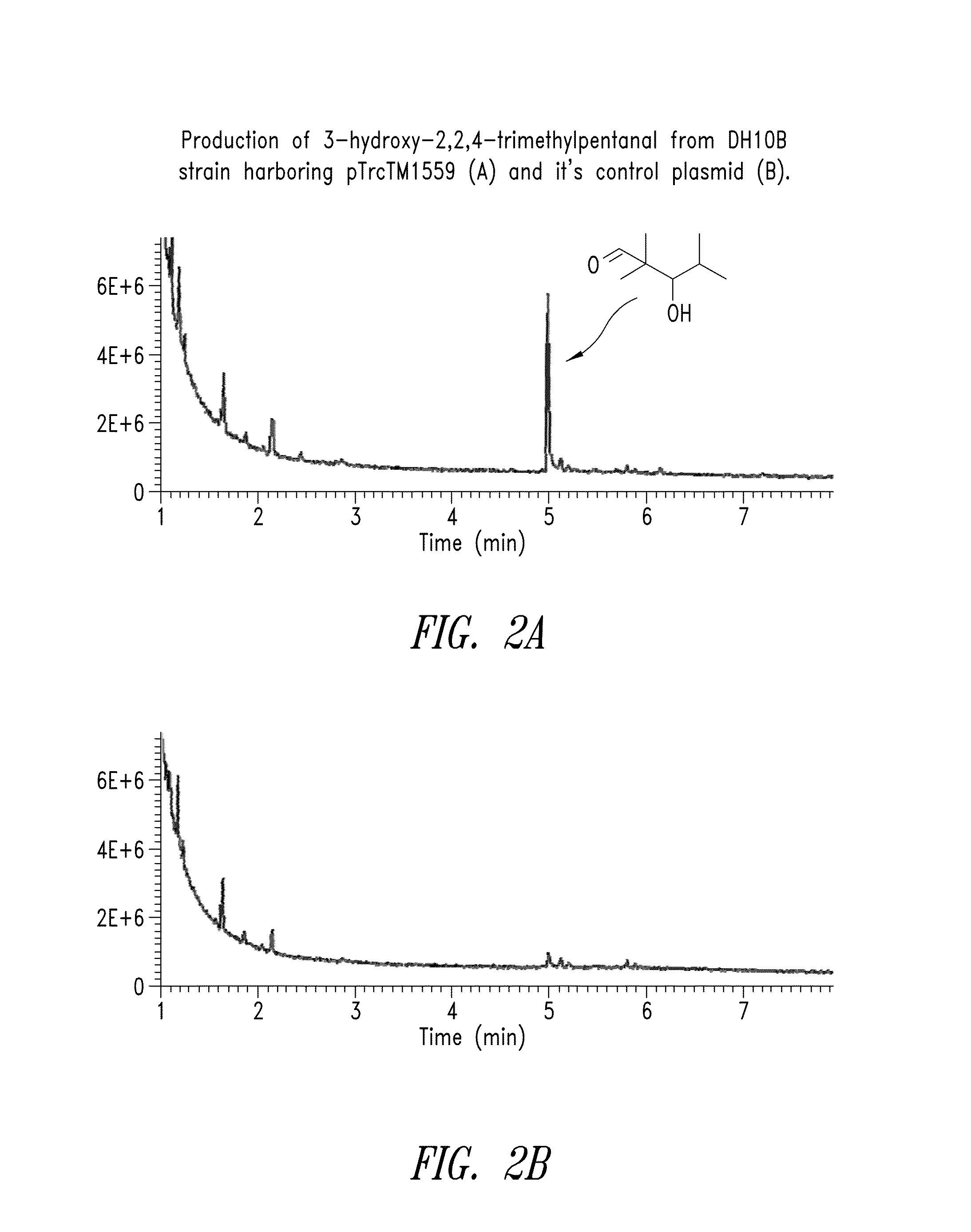Biosynthesis of commodity chemicals
a commodity chemical and biosynthesis technology, applied in the field of biosynthesis of commodity chemicals, can solve the problems of lignocellulolic biomass degradation using biological systems, increase in the use of pesticides and fertilizers, and decrease in water availability and quality
- Summary
- Abstract
- Description
- Claims
- Application Information
AI Technical Summary
Benefits of technology
Problems solved by technology
Method used
Image
Examples
example 1
Aldehyde / Ketone Biosynthesis Pathways
[0231]To provide a useful source of aldehydes and / or ketones, such as butyraldehyde and isobutyraldehyde, recombinant microorganisms that comprise an aldehyde and / or ketone biosynthesis pathway, and which are capable of converting a suitable monosaccharide or oligosaccharide to an aldehyde or ketone, were constructed.
[0232]A butyraldehyde biosynthetic pathway comprising a thiolase (atoB) gene from E. coli, β-hydroxy butyryl-CoA dehydrogenase (hbd), crotonase (crt), butyryl-CoA dehydrogenase (bcd), electron transfer flavoprotein A (etfA), and electron transfer flavoprotein B (etfB)genes from Clostridium acetobutyricum ATCC 824, and a coenzyme A-linked butyraldehyde dehydrogenase (ald) gene from Clostridium beijerinckii acetobutyricum ATCC 824 was constructed in E. coli and tested for the ability to produce butyraldehyde. Also, a coenzyme A-linked alcohol dehydrogenase (adhE2) gene from Clostridium acetobutyricum ATCC 824 was used as an alternative...
example 2
Production of 3-Hydroxy-2,2,4 Trimethylpentanal from Isobutyraldehyde
[0255]The ability of an enzyme having aldolase activity to condense two molecules of isobutyraldehyde to form 3-hydroxy-2,2,4-trimethylpentanal was tested in vivo. Plasmid TrcTM1559 was constructed as described in Example 5 below, and contains an aldose-encoding polynucleotide sequence that was obtained from Thermotoga maritima.
[0256]A single colony of E. coli DH10B stain harboring pTrcTM1559 was inoculated into fresh LB media containing Amp100 and the culture was grown in an incubation shaker at 37° C. for overnight. One percent of this culture was inoculated into fresh TB media containing Amp100 and the culture was grown in incubation shaker at 37° C. When the culture was grown to an OD600nm of 0.6, the culture was induced with 0.5 mM IPTG. 50 mM isobutyraldehyde was added and the cultures were grown for a day. 500 ul of culture was extracted with 500 ul of ethylacetate, and the extracts were analyzed by GC-MS. ...
example 3
Production of 2,2,4-Trimethyl-1,3-Pentanediol from Isobutyraldehyde
[0257]The ability of a recombinant microorganism comprising an aldolase enzyme and an alcohol dehydrogenase to convert isobutyraldehyde to 2,2,4-trimethyl-1,3-pentanediol is tested. Plasmid TrcTM1559 is described in Example 2 above. Various alcohol dehydrogenases were isolated from Pseudomonas putida KT2440, Pseudomonas fluorescens Pf-5, and Klebsiella pneumoniae MGH 78578 (see SEQ ID NO:1-34) and cloned into expression plasmids, as described in U.S. application Ser. Nos. 12 / 245,537 and 12 / 245,540, which are incorporated by reference for their description, construction and testing of alcohol dehydrogenase enzymes. Additional alcohol dehydrogenases were also obtained from Pseudomonas putida (see SEQ ID NOS:83-96).
[0258]A single colony of E. coli DH10B stain harboring both pTrcTM1559 and an alcohol dehydrogenase expressing plasmid is inoculated into fresh LB media containing Amp100 and the culture is grown in incubatio...
PUM
 Login to View More
Login to View More Abstract
Description
Claims
Application Information
 Login to View More
Login to View More - R&D
- Intellectual Property
- Life Sciences
- Materials
- Tech Scout
- Unparalleled Data Quality
- Higher Quality Content
- 60% Fewer Hallucinations
Browse by: Latest US Patents, China's latest patents, Technical Efficacy Thesaurus, Application Domain, Technology Topic, Popular Technical Reports.
© 2025 PatSnap. All rights reserved.Legal|Privacy policy|Modern Slavery Act Transparency Statement|Sitemap|About US| Contact US: help@patsnap.com



